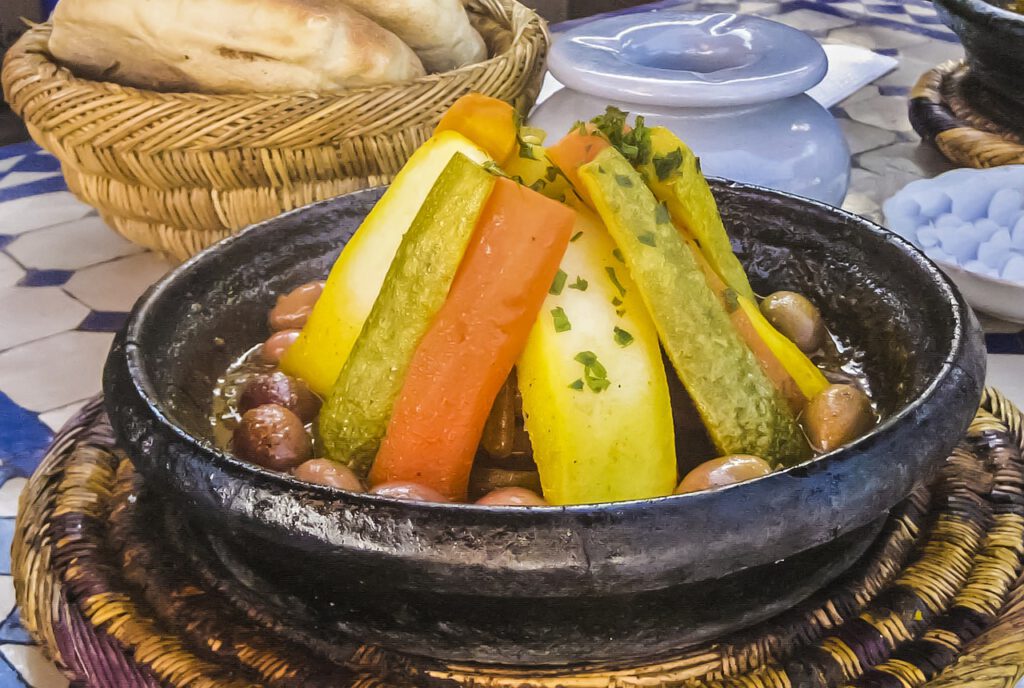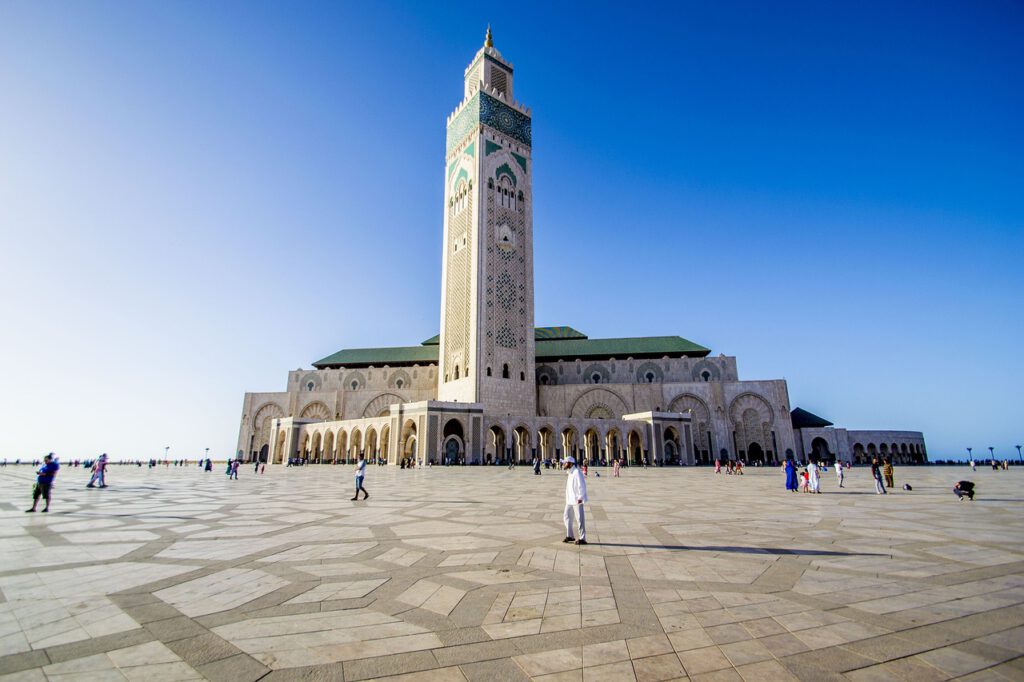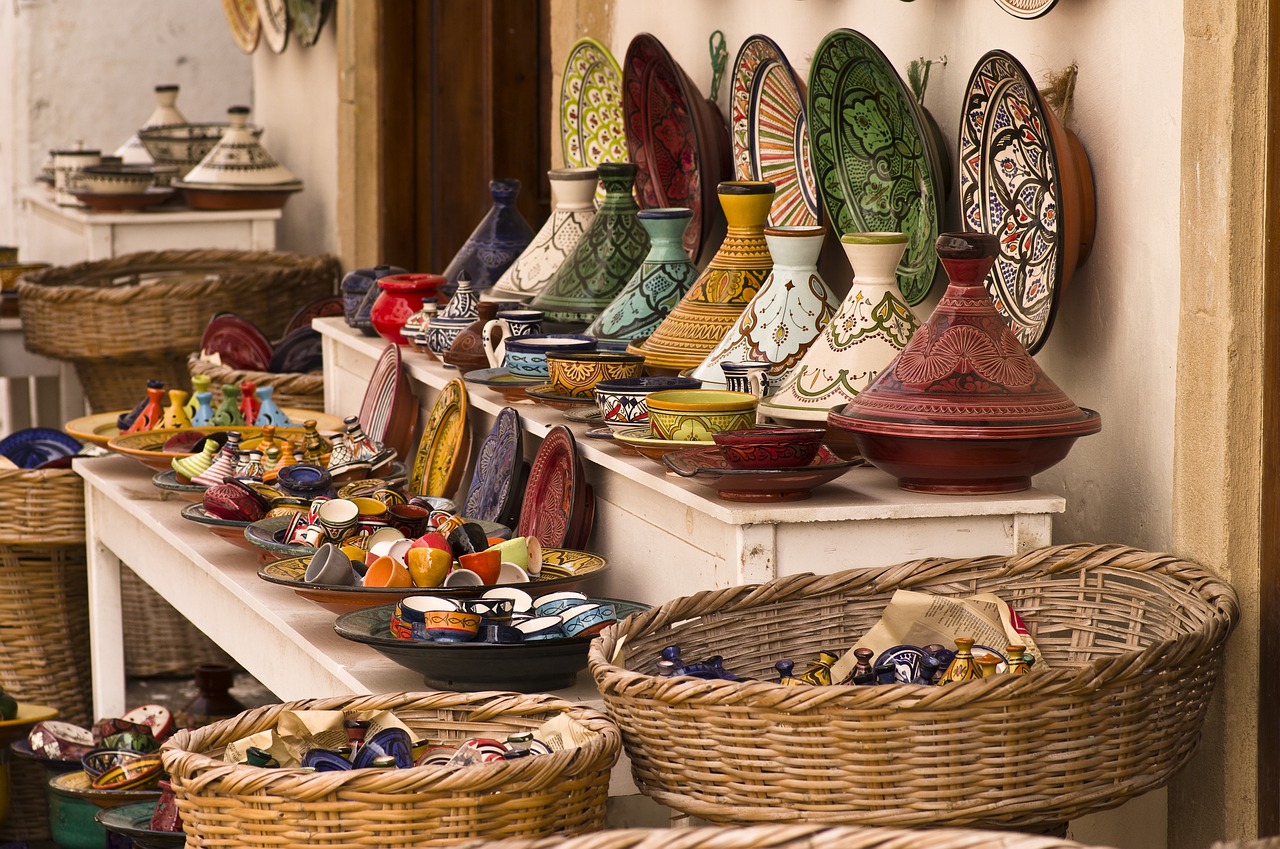A Flavorful Journey Through Tradition and Taste
Moroccan cuisine offers an unparalleled culinary experience, combining rich flavors, diverse ingredients, and centuries-old traditions. From the bustling markets of Marrakech to the serene villages of the Atlas Mountains, Moroccan food is as varied and vibrant as the landscape itself. This comprehensive guide delves into the essence of Moroccan cuisine, highlighting its history, key ingredients, iconic dishes, and practical tips for recreating these flavors in your own kitchen.
A Glimpse into Moroccan Cuisine
Moroccan cuisine is a celebration of cultural diversity and history. The country’s strategic location at the crossroads of Africa, Europe, and the Middle East has led to a melting pot of culinary influences. Moroccan food is characterized by its complex spice blends, fresh herbs, and a delightful interplay of sweet and savory flavors.
Historical Influences on Moroccan Cuisine
The rich history of Morocco is deeply reflected in its cuisine. Various cultures have contributed to the development of Moroccan food:
**1. Berber Roots: The indigenous Berber people have laid the foundation of Moroccan cooking with their use of spices and traditional cooking methods. Ingredients like cumin, coriander, and saffron are essential in Berber cuisine.
**2. Arab Contributions: The Arab influence brought new spices and ingredients, such as cinnamon and almonds, which became integral to Moroccan dishes. The introduction of couscous, a staple in Moroccan meals, is also attributed to Arab culinary traditions.
**3. Mediterranean Impact: The Mediterranean influence introduced olive oil, fresh herbs, and seafood to Moroccan cuisine. These elements added variety and depth to the Moroccan culinary repertoire.
**4. Colonial Era: The French and Spanish colonial periods introduced new cooking techniques and ingredients, further enriching Moroccan cuisine. The fusion of traditional and modern elements is a testament to Morocco’s dynamic food culture.
Essential Ingredients in Moroccan Cuisine
Moroccan cooking relies on a variety of ingredients that contribute to its distinctive flavors. Here’s a detailed look at some of the essential elements:
**1. Spices: Moroccan cuisine is celebrated for its rich and colorful spice blends.. Here are some essential spices:
- Cumin: Adds a warm, earthy flavor that is central to many Moroccan dishes.
- Coriander: Offers a slightly sweet, citrusy note that complements other spices.
- Cinnamon: Provides a warm, sweet undertone, often used in both savory and sweet dishes.
- Saffron: Imparts a delicate, floral aroma and rich color.
- Turmeric: Provides a bright yellow color and a hint of earthy bitterness.
**2. Herbs: Fresh herbs are crucial for enhancing the flavors of Moroccan dishes. Key herbs include:
- Cilantro: Adds a fresh, bright flavor to salads, stews, and tagines.
- Parsley: Provides a clean, grassy note that complements various dishes.
- Mint: Adds a refreshing touch, often used in beverages and salads.
**3. Fruits and Nuts: Dried fruits and nuts are commonly used in Moroccan cuisine to add sweetness and texture. Examples include:
- Dried Apricots: Often used in tagines and stews for a hint of sweetness.
- Dates: Used in both sweet and savory dishes, providing a rich, caramel-like flavor.
- Almonds: Frequently included in pastries and savory dishes for added crunch.
**4. Olive Oil: A staple in Moroccan kitchens, olive oil is used for cooking, dressing salads, and adding flavor.
**5. Couscous: Made from steamed semolina wheat, couscous is a versatile side dish and a staple in Moroccan meals.
Iconic Moroccan Dishes

Moroccan cuisine features a variety of dishes, each with its own unique flavors and ingredients. Here are some iconic Moroccan dishes:
**1. Tagine: Tagine refers to both the traditional Moroccan stew and the earthenware pot used to cook it. The slow-cooking process allows the flavors to meld beautifully. Common ingredients in tagines include lamb, chicken, and a mix of fruits and vegetables. Tagines are often seasoned with a blend of spices, creating a rich and aromatic dish.
**2. Couscous: Couscous is a staple in Moroccan cuisine, made from steamed semolina grains. It is typically served with a stew or sauce on top and can be accompanied by meat, vegetables, or a combination of both. The fluffy texture of couscous makes it an excellent base for flavorful toppings.
**3. Harira: Harira is a traditional Moroccan soup, often enjoyed during Ramadan. It is a hearty and nutritious soup made with tomatoes, lentils, chickpeas, and a blend of spices. Harira is typically served with dates and chebakia, a type of sweet pastry.
**4. Pastilla (Bastilla): Pastilla is a savory-sweet pie made with layers of thin pastry filled with spiced meat (usually chicken or pigeon) and almonds. The pie is topped with powdered sugar and cinnamon, creating a unique contrast of flavors.
**5. Mechoui: Mechoui is a traditional Moroccan dish where a whole lamb is roasted or spit-roasted until tender. It is seasoned with a blend of spices and often served with flatbread. Mechoui is a popular dish for special occasions and gatherings.
**6. Zaalouk: Zaalouk is a Moroccan salad made from roasted eggplant and tomatoes. It is seasoned with garlic, cumin, and paprika, and served as a dip or side dish. The smoky flavor of the roasted eggplant adds depth to this refreshing salad.
**7. Mint Tea: Moroccan mint tea, also known as „Moroccan whiskey,“ is a staple beverage made from green tea, fresh mint leaves, and a generous amount of sugar. It is served throughout the day and symbolizes hospitality and friendship.
Cooking Tips for Moroccan Cuisine
To achieve authentic Moroccan flavors in your cooking, consider these tips:
**1. Use High-Quality Spices: Freshly ground spices provide the best flavor. Invest in whole spices and grind them as needed for optimal taste.
**2. Layer Flavors: Moroccan cooking often involves layering flavors through the use of spices and herbs. Incorporate spices at various points throughout the cooking process to enhance depth and complexity.
**3. Slow Cooking: Many Moroccan dishes, such as tagines, benefit from slow cooking. Allowing the ingredients to cook slowly helps develop richer, more nuanced flavors.
**4. Balance Sweet and Savory: Moroccan cuisine frequently balances sweet and savory elements. Experiment with adding dried fruits, nuts, or a touch of honey to your savory dishes for a unique flavor profile.
**5. Experiment with Spice Blends: Moroccan cuisine features various spice blends, such as Ras el Hanout. Don’t hesitate to experiment with these blends or create your own to enhance your dishes.

Recreating Moroccan Cuisine at Home
Bringing Moroccan cuisine into your kitchen can be a rewarding experience. Here’s how you can start:
**1. Start with Simple Recipes: Begin with simpler dishes like zaalouk or Moroccan lentil soup to familiarize yourself with the flavors and techniques.
**2. Invest in Essential Tools: Consider investing in a tagine pot or a good-quality spice grinder to enhance your Moroccan cooking experience.
**3. Explore Moroccan Cookbooks: There are many Moroccan cookbooks and online resources available. Explore different recipes and techniques to find your favorites.
**4. Host a Moroccan Feast: Invite friends and family for a Moroccan-themed dinner party. Prepare a variety of dishes and serve Moroccan mint tea for an authentic experience.
**5. Visit Moroccan Markets: If possible, visit Moroccan markets or specialty stores to find authentic ingredients and spices. This can add an extra layer of authenticity to your cooking.
The Cultural Significance of Moroccan Cuisine
Moroccan cuisine is more than just food; it’s a reflection of the country’s cultural heritage and traditions. Meals are often enjoyed with family and friends, and hospitality plays a central role in Moroccan culture. Sharing food is a way to bring people together and celebrate life’s moments.
**1. Family Meals: Moroccan meals are often communal, with dishes served in large platters for everyone to share. This shared dining tradition promotes a feeling of unity and connection among participants.
**2. Hospitality: Moroccan hospitality is renowned for its warmth and generosity. Guests are often greeted with a glass of mint tea and a selection of sweet and savory treats.
**3. Festivals and Celebrations: Moroccan cuisine is integral to festivals and celebrations, such as Ramadan and weddings. Special dishes are prepared for these occasions, highlighting the importance of food in cultural rituals.
Conclusion
Moroccan cuisine offers a rich and diverse culinary experience that reflects the country’s history, culture, and traditions. From the aromatic tagines to the fluffy couscous and the refreshing mint tea, Moroccan food is a celebration of flavors and hospitality.
By understanding the essential ingredients, exploring iconic dishes, and experimenting with recipes, you can bring the vibrant flavors of Moroccan cuisine into your own kitchen. Whether you’re preparing a traditional meal or hosting a Moroccan-themed dinner, the essence of Moroccan cooking promises to delight your senses and enrich your culinary journey.
Embrace the adventure of Moroccan cooking, and let its rich heritage inspire your kitchen creations. Bon appétit!

